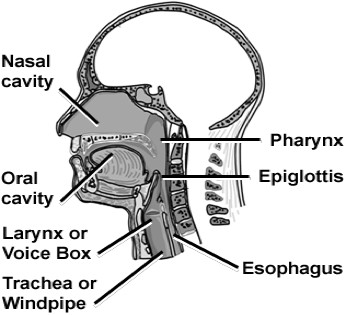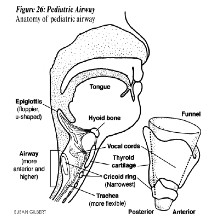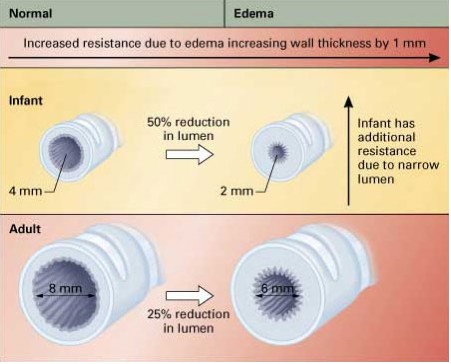Upper Respiratory System
 Definition
Definition
The upper respiratory system consists of the parts outside the chest cavity including:
- nasal cavity
- pharynx
- epiglottis
- larynx
- esophagus
-
trachea
 The upper respiratory system changes with growth. Children's airways are smaller and shorter.
The upper respiratory system changes with growth. Children's airways are smaller and shorter.
- Child's epiglottis is floppier and U-shaped.
- Child's airway is anterior and higher.
-
Child's trachea is more flexible.
- Airway muscles and cartilage are not completely developed. This makes it easier for the airways to collapse.
- Small amounts of mucus or swelling can greatly decrease the radius of the airway, increasing resistance to airflow and the work of breathing.
- One mm of edema increases the resistance in an infant's airway by a factor of 16 versus a factor of 2.4 in an adult airway.

Source: Markenson, D.S. Pediatric Prehospital Care, New Jersey: Prentice Hall, 2002, p. 97.